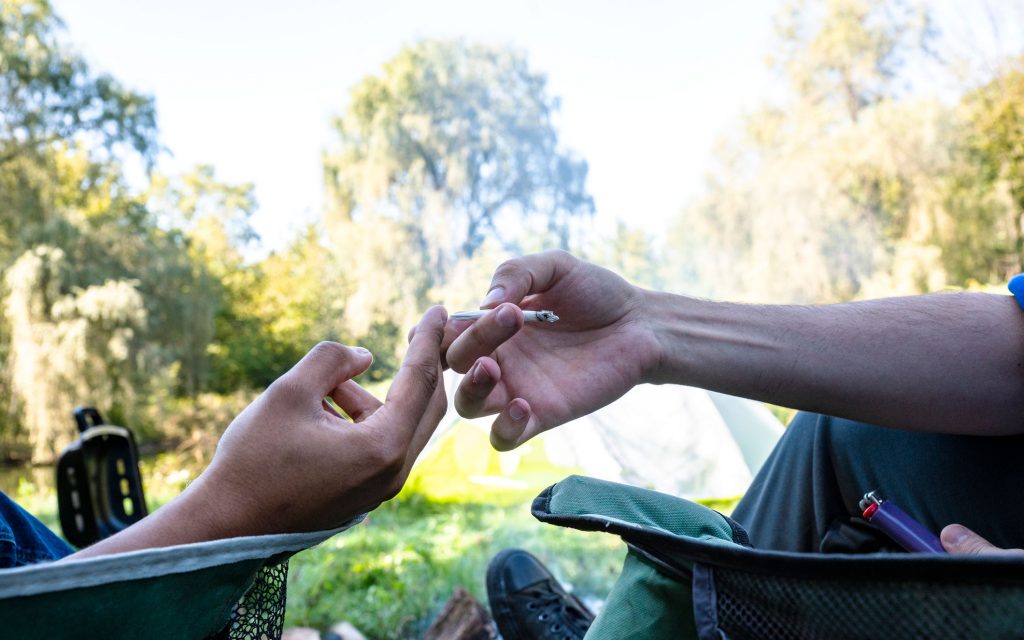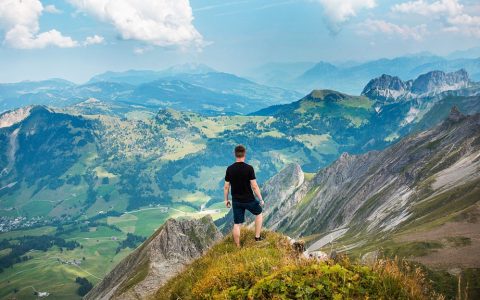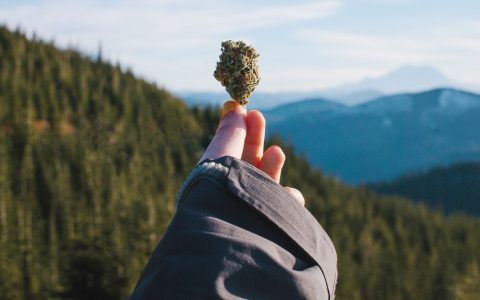Parks Canada now allows campers to consume cannabis in all campsites and reservations for the 2019 season open this week.
As per classic Canadian politics however, where, when and who can smoke vary by province.
Some basic national rules: adults of the legal age can carry 30 grams of cannabis with them—that includes on trains, planes and cars—though it’s important for the weed to be stored in a sealed and inaccessible spot during a road trip.
You can smoke, vape and eat cannabis within your own Parks Canada campsite and you can hotbox a legally parked RV—but steer clear of smoking in a car or on a boat which can land you a $1,000 to $5,000 fine.
Smoking in all campsite common areas, like washrooms and kitchens is also prohibited.
And it’s important to leave all cannabis products at home if crossing the border or risk a lifetime ban from visiting our southern neighbours.
Private campsites may have different rules than Parks Canada, so take the time to ask while planning your summer retreat.
British Columbia
In British Columbia, campers can consume in public day use areas, while on trails, and wandering through the backcountry, but must not smoke within six metres of a playground.
Recommended: Toke up at Yoho National Park and hold a 505 million-year-old fossil in your hand. Take some time to consider how the breath-taking Rocky Mountains used to be at the bottom of the ocean.
Alberta
Alberta is similar to BC—you can smoke in day use areas, trails and backcountry but you must be five metres away from playgrounds.
Recommended: While the city of Banff has banned cannabis Canadians can still suck on a vape pen in the Hamlet of Lake Louise with that picturesque view of the glacier-blue lake in the background. Stare down a lemming trying to steal your GORP and then hop on the Lake Louise Gondola to enjoy a meal at the Whitehorn Bistro at 2,042 metres high. Oh, that view!
Saskatchewan
Saskatchewan cracks down and only allows consumption within campsites.
Recommended: Book an oTENTik in Grasslands National Park, home of Canada’s largest Dark Sky Preserve and enjoy an unparalleled starry sky while kicking back in an Adirondack chair around a fire pit. With raised floors, a patio, bunk beds, and small tent-heater, who needs to leave the campsite?
 Fertnig/iStock
Fertnig/iStock
Manitoba
Manitoba also only allows campers to consume in their campsites.
Recommended: Head to Riding Mountain National Park to stay in a MicrOcube which is essentially a dorm room with a giant glass wall in the middle of nature. Sleep in a double bed and use solar power to charge your vape; or book your stay in a ramp-accessible yurt.
Ontario
Ontario allows campers to consume in public use, backcountry and trails but keep 20 metres away from all playgrounds.
Recommended: Book one of 10 yurts at Bruce Peninsula National Park Reserve and kick back on your patio while watching the sunset over the lake. Grill something on your propane BBQ and cozy up around the wood fire stove when the evening gets chilly.
Quebec
While the province is set to tighten cannabis regulations this spring, at the time of publishing, in Quebec campers are directed to keep nine metres away from playgrounds but can consume in day use spaces, trails, and the backcountry.
Recommended: Enjoy oTENTiks and micOcubes in Forillon National Park where beds, lights, fire pits, and picnic tables are provided—the micOcube also comes with solar power to charge your vape.
Newfoundland and Labrador
Newfoundland and Labrador move back to conservative rules only allowing campers to consume in their campsites.
Recommended: Sleep with the birds at Terra Nova National Park in the Ôasis, a water droplet shaped structure with glass on all sides that sleeps three, or book an oTENTik.
New Brunswick
New Brunswick also bans cannabis consumption except for at campsites.
Recommended: Head to Fundy National Park to enjoy sleeping in a Goutte d’Ô (the same design as the Ôasis), or book a yurt, an oTENTik, or a rustic cabin which you can snowshoe to in the winter.
Nova Scotia
Nova Scotia gets a bit tricky when it comes to its laws around cannabis. Campers can consume in day use areas but must be four metres from all buildings and cannot smoke on coastal benches, and must keep back 20 metres from all playgrounds. Smoking is allowed in the backcountry but not within nine metres of a trail, where no consumption is permitted.
Recommended: Kejimkujik National Park lets campers book oTENTiks, yurts and rustic cabins on the edge of the Mersey River. The park has an amphitheatre for live music, is a Dark Sky Preserve and offers guided “spirit of the settlers night hike” through an old farmstead.
Prince Edward Island
Prince Edward Island also only allows campers to consume cannabis in their campsites.
Recommended: While you can’t camp at it, plan your trip around visiting Green Gables Heritage Place where bilingual actors play the parts of Anne Shirley (AKA Anne of Green Gables) and her friends. Attend picnics, enjoy live music, listen to ghost stories and enter an old-fashioned race for your chance to coffer crushing defeat to that little red-haired heroine.
Northwest Territories
The Northwest Territories is a paradise for the backcountry bound. Most areas are accessible only by air charter for a few short summer months and are best known for arctic canoeing and kayaking. Campers can consume on trails, in the backcountry, and in day use areas—just not within 30 metres of a playground.
Recommended: In Aulavik National Park there are no designated campsites and you can pitch a tent anywhere you choose—so long as it’s not on top of an archeological site. Bonus points if you follow Parks Canada’s official poop guide.
Yukon
The Yukon only allows campers to consume within their campsite but does offer literally 24 hours of sunshine between June and September.
Recommended: Head to Kluane National Park and hike around Mount Logan, otherwise known as Canada’s tallest mountain, before kicking back to relax at an oTENTik for a night (no that’s not a typo) filled with sunshine. Enjoy wood burning stoves, solar-powered lanterns and (perhaps most important) a mosquito shelter.







